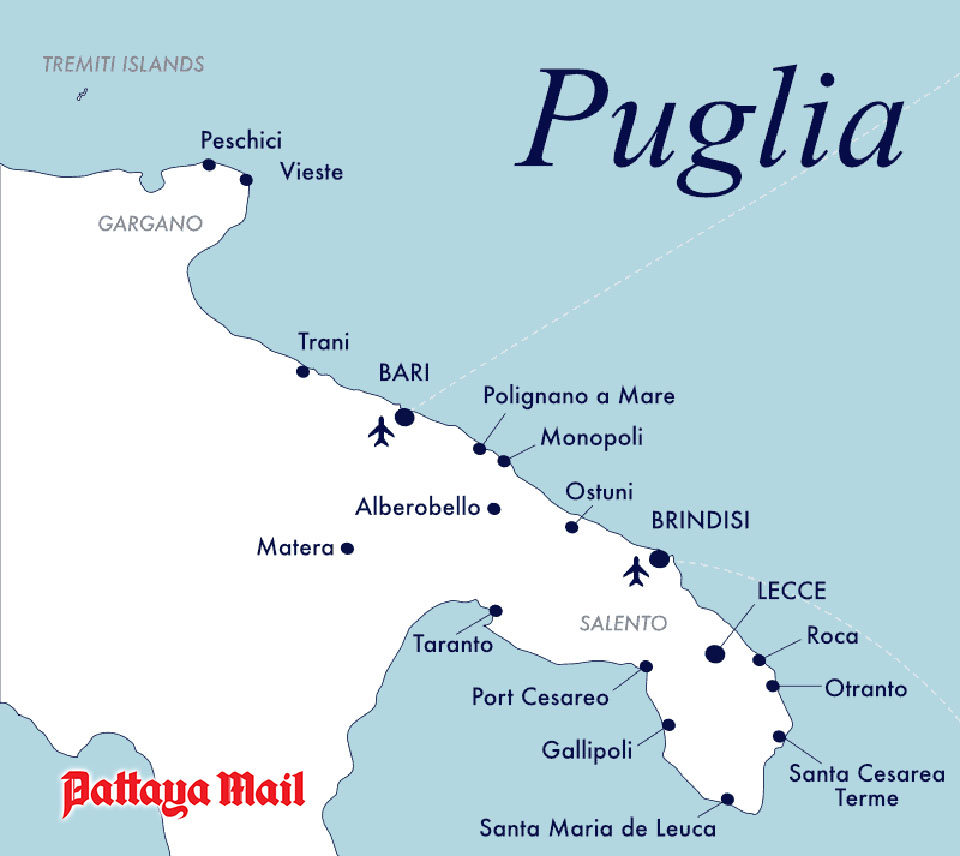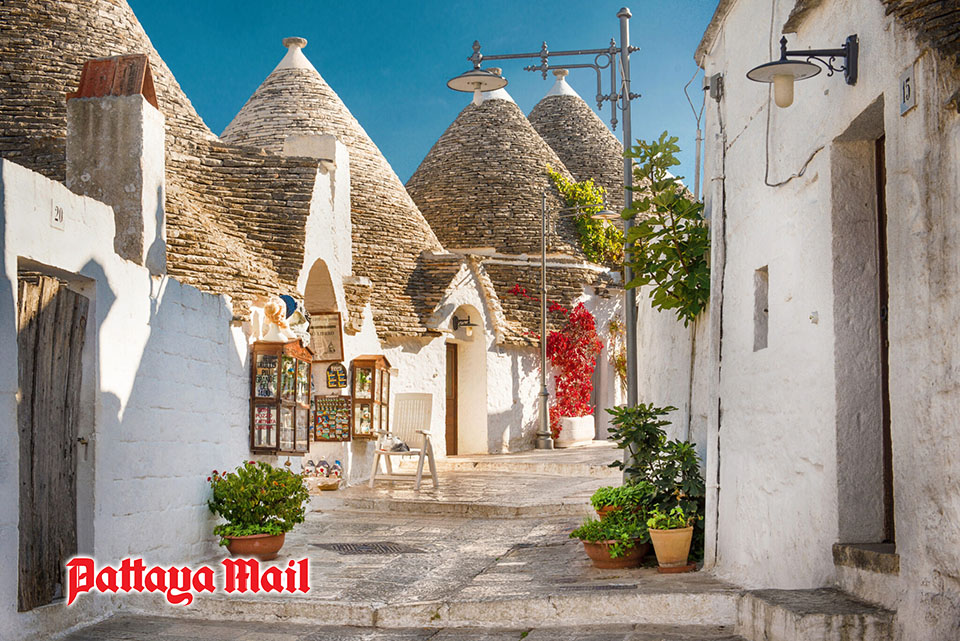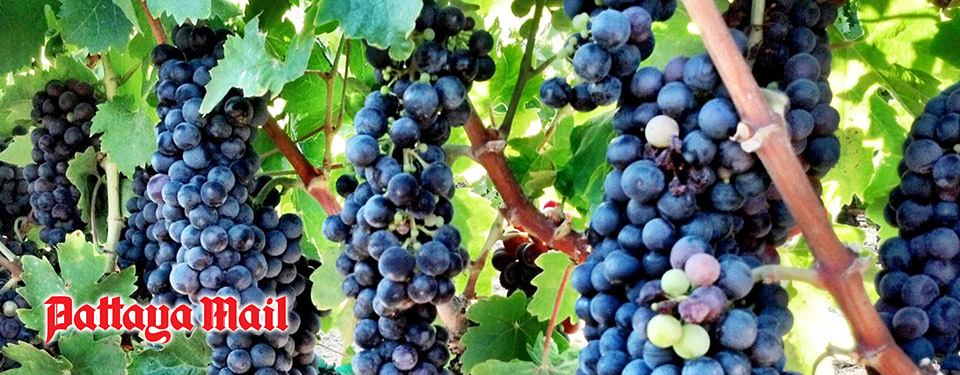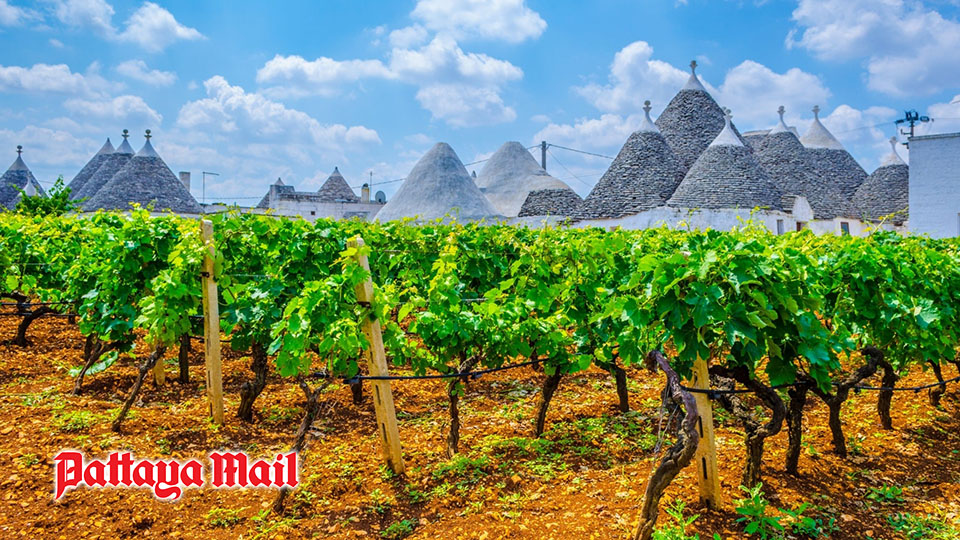
If you were to take Italy’s Autostrada A14 from Bologna and drive south-east, you’d find yourself following the Adriatic Coast. Four hundred miles later, you would arrive in the city of Bari, assuming of course that you hadn’t taken a wrong turning on the way. The A14 is the second-longest motorway in Italy and connects many places of historical significance. Bari is one of southern Italy’s most prominent cities, combining seaside charm and historical appeal. It’s an important cruise port, known for its picturesque old town. It’s the capital city of the Apulia region, which is more commonly known as Puglia (Poo-lee-ah). The region lies on the distinctive “heel” of the Italian boot and has an area of about 7,500 square miles and a population of about four million people.

Puglia is home to some of Italy’s best value wines. Most of them are red and full-bodied and the region is also responsible for half of Italy’s olive oil production. Puglia is partly surrounded by water allowing cool Mediterranean breezes to moderate the temperature of the vineyards and the olive groves. Most of Puglia lies on a limestone plateau and its soils are rich in calcium. As a result, the region is the ideal habitat for grape vines. The two most popular and widely available wines from Puglia are Salice Salentino (rarely seen in this neck of the woods) and the much more well-known Primitivo.

You may have discovered already that Italian wine labels can be confusing. Some wines, such as Valpolicella come from a specific viticultural zone and are a blend of several grape varieties so the name refers really to a style of wine. Amarone is also a style of wine, not a grape variety. Soave comes from vineyards around the town of Soave and is not, as some novices assume, a description of the wine’s style. Marsala is named after the city of Marsala in Sicily; Chianti gets its name from the Chianti Mountains in Tuscany. And to add to the confusion, some grape varieties have different names.
Sangiovese, the most popular red grape of Italy has many alternative regional names including Brunello di Montalcino, Vino Nobile di Montepulciano and Rosso di Toscana. Many wines, such as Pinot Grigio or Verdicchio are simply named after grape varieties. Primitivo is another such wine and nearly all of it is grown in Puglia. The Primitivo grape was originally from Croatia where it’s known as Crljenak Kaštelanski but it found its true home on the limestone plateaux of Puglia where it was introduced during the 18th century. And incidentally, the name Primitivo has nothing to do with the word “primitive”, an assumption that could well have deterred some wine buyers from trying it. The word comes from the Latin primativus which means “early ripening”.

And here’s an interesting thing. In 1972 it was discovered by American ampelographers that Primitivo was genetically identical to California’s popular Zinfandel grape, which had long been a favourite among American consumers. It’s thought that Primitivo grapes were taken to America sometime during the 19th century where the grape became known by various names before the name Zinfandel became established. It proved extremely successful, earning a reputation as the “American National Grape”. Today Zinfandel is grown across the United States where it varies in style ranging from dessert wines to Beaujolais-style light reds, or big hearty reds and fortified wines in the style of port.
In contrast, Italian Primitivo is a different animal. The small grapes ripen unevenly so growers leave them on the vine to ripen fully. This increases the sugar content which in turn makes for high alcohol wines. The dark-skinned grape is known for producing inky, tannic wines with flavors of black cherry, black currant, blackberry, raspberry or cranberry jam. It often shows distinctly earthy or dark flavors of black pepper, cardamom, clove and sometimes even dark chocolate and liquorice.
Primitivo Puglia IGP (2021), Messer del Fauno, Italy (red). ฿690.00 @ Wine Connection
A masseria is a typical southern Italian farm and Messer del Fauno is a respected artisanal Italian estate in Puglia which offers a selection of premium southern Italian varietals, made by the company’s winemaker Sabino Russo.
If you are not familiar with Italian wine jargon, you might be wondering about the meaning of IGP. I shall explain, so please sit up straight and look as though you’re interested. Since the early 1960s, Italy’s wine classification system has been updated and refined. All wines undergo analysis and testing by a government-approved panel and today there are three quality tiers (1) DOP (Denominazione di Origine Protetta) (2) IGT (Indicazione Geografica Tipica) and (3) VdT (Vino da Tavola). The first classification incudes the older DOC and DOCG wines which are top quality wines but less often seen, especially in Thailand.
The IGP (“Protected Geographic Indication”) tier is a guarantee of quality and authenticity and it’s awarded to wines whose quality, reputation and characteristics are closely linked to their geographical origin. At least 85% of the grape vines must be harvested and 85% of the production process must take place in the defined geographical area. It’s important to understand that IGP wines are not necessarily lower quality than DOP wines. Some wineries prefer to produce IGP wines because they are not bound by the narrowly defined regions or stringent rules which govern DOP wines. It’s a somewhat complicated system, but that’s the gist of it.

This is a dark, intense crimson colour with a peppery, spicy aroma and hints of ripe dark berries. Swirl it around in the glass and you’ll see those characteristic “legs” appearing on the side of the glass. At 13% ABV, the wine is satisfyingly dry though the palate is quite soft, probably because the wine is now three years old and ready for drinking. There’s plenty of attractive fruit on the palate, with a touch of chocolate and licorice. Although there is a good “grip” on the palate the tannins are surprisingly light and supple.
The wine has a long, dry finish and at this price level is surprisingly complex. It’s an excellent example of Primitivo and tastes better just below the ambient temperature. Any cooler and the acid and tannin become emphasized. The wine was perfect with black olives which incidentally, are also produced by the same company. The savory, peppery nature of the wine makes it perfect for food.
Primitivo pairs well with Middle Eastern spicy food that enhance the wine’s cinnamon-spice subtleties. I tried it with pizza containing onions, olives and anchovies and it worked perfectly. I would guess that it could make an ideal partner for beef or lamb dishes, rich and bold cheeses or vegetables made into richly flavoured dishes. I read somewhere that young Primitivo also works well with baked beans: an unlikely combination I’d have thought, but then I cannot claim to be a connoisseur of baked beans.








